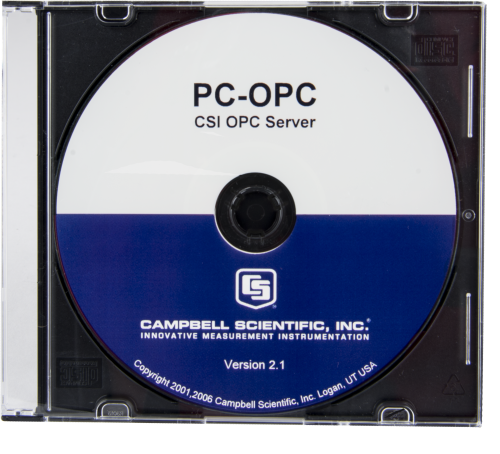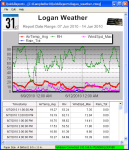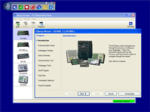This product is not available for new orders.

| Services Available | |
|---|---|
| Free Support | No |
Overview
The PC-OPC Server uses the OPC standard interface to allow third-party, OPC-compatible graphics packages to view data from the LoggerNet server. This software provides a simple browser interface that allows you to easily select the values you want to display. It also allows you to view input locations, final storage data, and LoggerNet communications server statistics, as well as perform control operations.
Read MoreBenefits and Features
- Demo version available for download
Technical Description
The PC-OPC Server uses a simple browse interface that:
- Provides data via “data tags” to any SCADA or third-party software that supports OPC
- Updates, or pushes, data to third-party software as the LoggerNet server collects it from the datalogger(s)
- Allows third-party software to set input locations, variables, ports, and flags in our dataloggers
A PC-OPC trial version is available, at no charge, from our downloads page. The trial version generates random data instead of retrieving the data.
Images



Compatibility
Requires a licensed copy of LoggerNet running on the same PC or a remote PC that is accessible via TCP/IP.
Data Loggers
PC-OPC is compatible with most of our data loggers.
Specifications
| Data Access Standard | Supports Data Access Standard 2.05a only. |
| Requirement | Licensed copy of LoggerNet or LoggerNetAdmin must be running on the same PC or a remote PC that is accessible via TCP/IP. |
| Purchased Separately | Yes |
| Dimensions | 12.7 x 14.0 x 0.33 cm (5.0 x 5.5 x 0.13 in.) |
| Weight | 45.4 g (0.1 lb) |
Resources and Links
Product Brochures
Manuals
Downloads
PC-OPC Demo v.2.1 (1.1 MB) 28-09-2006
Current demo version of our PC-OPC softwareFAQs for
Number of FAQs related to PC-OPC: 5
Expand AllCollapse All
-
The PC-OPC Server works with OPC Data Access Specification 2.05a.
-
The PC-OPC Server demo enables users to verify if an OPC client will work with Campbell Scientific’s OPC server. The trial version doesn't actually connect to a LoggerNet server or provide any true data. It only provides mock data.
-
If the OPC client software supports getting data from an SQL server, LoggerNet Database Software (LNDB) may be a more appropriate option than PC-OPC. LNDB stores a complete history of data tables retrieved from the data loggers in an SQL server. In contrast, PC-OPC only provides the last record from each data table in the LoggerNet cache when it is first started and any new records that are collected by LoggerNet while the PC-OPC Server is running. If the OPC client is storing PC-OPC data in its own database, gaps will be created (missing data) in the OPC client database if the PC-OPC Server, the OPC client, or both are not running when LoggerNet collects the data.
-
Campbell Scientific data loggers cannot communicate directly with LabVIEW. However, after retrieving data collected by any of the Campbell Scientific data loggers and placing the data in the LoggerNet data cache, the data can be shared with LabVIEW using a LoggerNet client called PC-OPC. A trial version of PC-OPC is available in the Downloads section of the PC-OPC product page.
The PC-OPC Server software provides a standard interface that allows third-party OPC-compatible graphics packages, including LabVIEW, to display the data logger data.
In addition to using the PC-OPC Server and the data socket feature in LabVIEW, communication can also be established using LoggerNet-SDK with ActiveX controls.
-
The blog article "How to Navigate the World of Software Upgrades, Patches, and Trials" explains the difference between patches (free of charge) and upgrades (for a fee). This example quickly shows the difference between an upgrade and a patch:
Upgrade Patch Major version change, such as 1.3 to 2.0
Minor version change, such as 1.3 to 1.4
Typically requires purchase for a fee
Free of charge
Privacy Policy Update
We've updated our privacy policy. Learn More
Cookie Consent
Update your cookie preferences. Update Cookie Preferences




